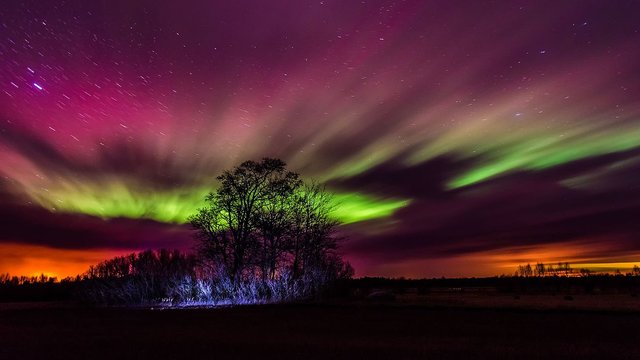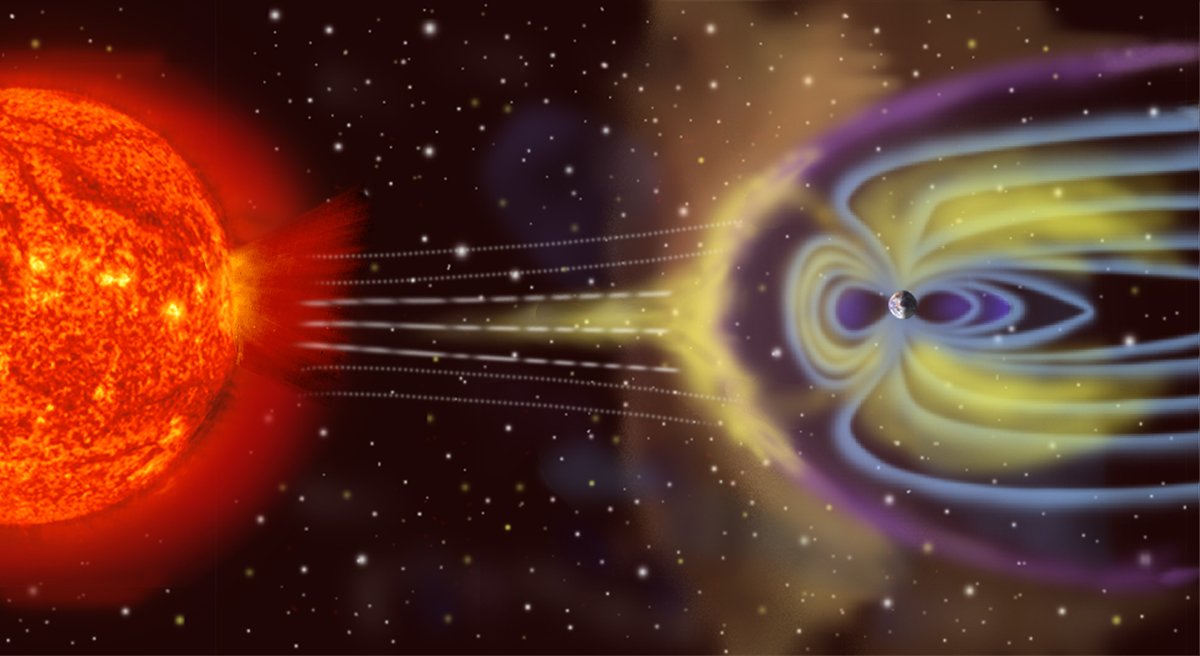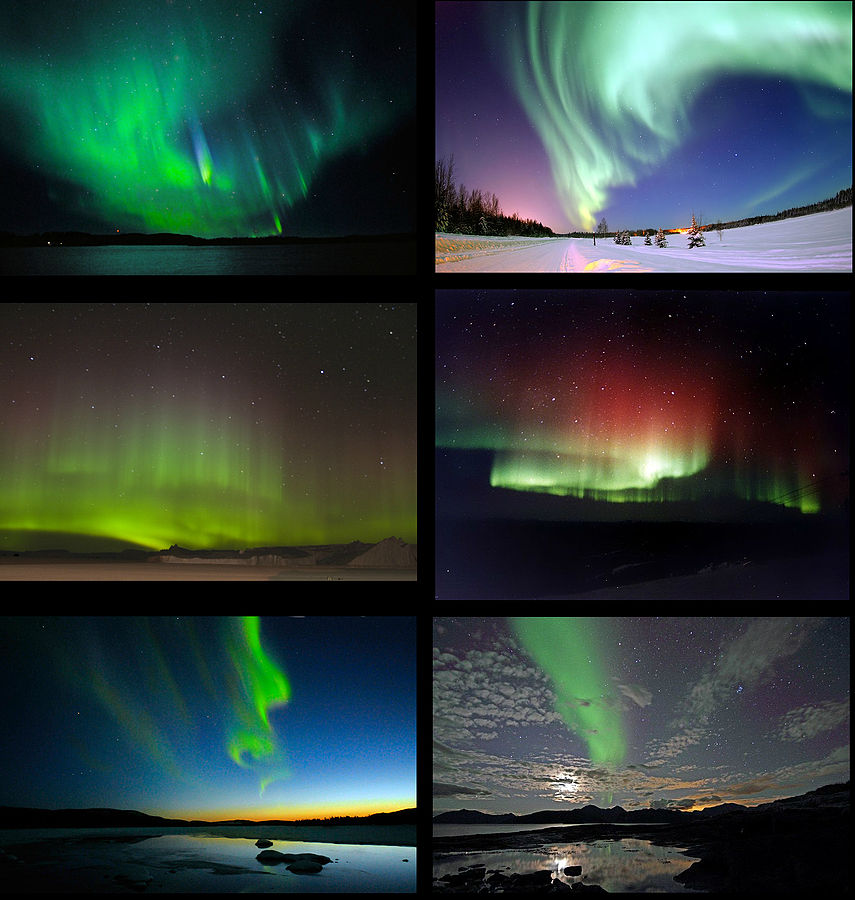Auroras - The mysterious curtains of light explained
Nature is full of beauty. From the twinkling stars to the beautiful red sunsets to rainbows, there are a lot of things that have made human beings awe for their grandeur.
Today I am going to write about 'Auroras' one of very exciting and beautiful phenomena that happens near the poles.

By Kristian Pikner - Own work, CC BY-SA 4.0, https://commons.wikimedia.org/w/index.php?curid=53660221
And one of them is the 'Aurora'. An aurora is a natural display of a shimmering band of colours seen in the night sky near the north and the south poles. There are two types of 'Auroras'. The aurora borealis or northern lights which occurs near the north pole and aurora australis or southern lights which occurs near the south pole.
They are usually seen as huge flying curtains of light of bright green or pink and rarely blue or red colours. Sometimes, however, they are also seen as spirals or waves.
Legends or myths
In earlier times, people thought Auroras brought famine and war, some believed that they were the spirits of their ancestors while some tribes believed that they were the spirits of the animals they hunted.
Nonetheless, the beautiful display of light had long fascinated humans. But with the advancement of science, these are less of a mystery.
Reasons for occurrence
Its amazing that even some of the most beautiful occurrences of nature can be explained by science.
To learn why these Auroras light up the sky, we need to venture into the earth's atmosphere and the sun's outburst of charged particles.
The earth's atmosphere is huge and consists of several layers which is responsible for many phenomenon like twinkling of stars, the colour of the sky being blue and of course Auroras.

By NASA -
, Public Domain, https://commons.wikimedia.org/w/index.php?curid=192450
The atmosphere consists of various gases and different gases on excitation emit different colours. When a solar wind carrying many charged particles hit the earth's magnetosphere, they get trapped in the earth's magnetic field which results in the excitation of the electrons of the gaseous atoms to a higher energy level. Due to this excitation they emit lights of different colours.
Why aren't Auroras observed near the equator?
The earth's magnetic field acts like a dipole so it is strongest at the magnetic poles. The magnetic lines of force emerge from the north and enter into the south pole. So when a solar wind hits the earth's atmosphere, they get trapped near the poles and not the equator because the magnetic field is not strong enough at the equator.
But there is a possibility that Auroras could be observed near the equator. The earth's magnetic poles are shifting at a slow rate. They get completely reversed roughly every 450,000 years on average. So at that point of time when the magnetic poles are near the equator, we would be able to see Auroras there.
Where are the perfect places to observe Auroras?

Auroras around the world
By The original uploader was 14jbella at English Wikipedia - Transferred from en.wikipedia to Commons., CC BY-SA 1.0, https://commons.wikimedia.org/w/index.php?curid=37486421
In the Northern hemisphere, the best places to observe Aurora borealis would be Anchorage, Denali and Fairbanks in Alaska, Denmark, Calgary Ontario and Manitoba in Canada to name a few.
In the Southern hemisphere, Queenstown in New Zealand, Mount Wellington in Tasmania, Victoria in Australia and the continent of Antarctica would be some of the best places to observe Aurora australis.
Keep in mind that the place should be free from any light pollution i.e. there shouldn't be a large source of light like a big town or city nearby to observe it clearly.
Thanks for reading. Please upvote and resteem if you liked it.
Have you seen an Aurora? How was the experience? Share with us in the comments below.
References:
Images are under CC0 license unless sourced.
Thank you for a good and interesting post.
I have seen the southern lights only once.
I was in outback country far from artificial lights.
But I was near Darwin! not victoria.
It was a very strange experience. The sky 'glowed'
That must have been awesome! One day I'd like to see it too.
:O
[email protected] you seem to be guy, having same interest like me. I also a bit curious to know about the universe. Nice to meet you, an indian friend over here. I followed you
please join me too
@arpitpaliwal😊😊☺️
Man what a good scene
Hope I had been there
Plzz share more pics if u have
I am too a nature lover
Follow &like my page too
This post has received a 0.76 % upvote from @buildawhale thanks to: @rahul.stan. Send at least 1 SBD to @buildawhale with a post link in the memo field for a portion of the next vote.
To support our daily curation initiative, please vote on my owner, @themarkymark, as a Steem Witness
Beautiful post .. id love to see one :D
Upvote and following you!
Your post had been curated by the @buildawhale team and mentioned here:
https://steemit.com/buildawhale/@buildawhale/buildawhale-curation-digest-11-10-17
You have received a Whaleshare Token upvote (@officialfuzzy) thanks to @akrid.
Keep up the good work and original content, everyone appreciates it!
I was thinking of doing a post explaining how aurora works as well haha. Now I need another idea.... Your post is pretty good though, very concise and easy to understand :)
plz follow me